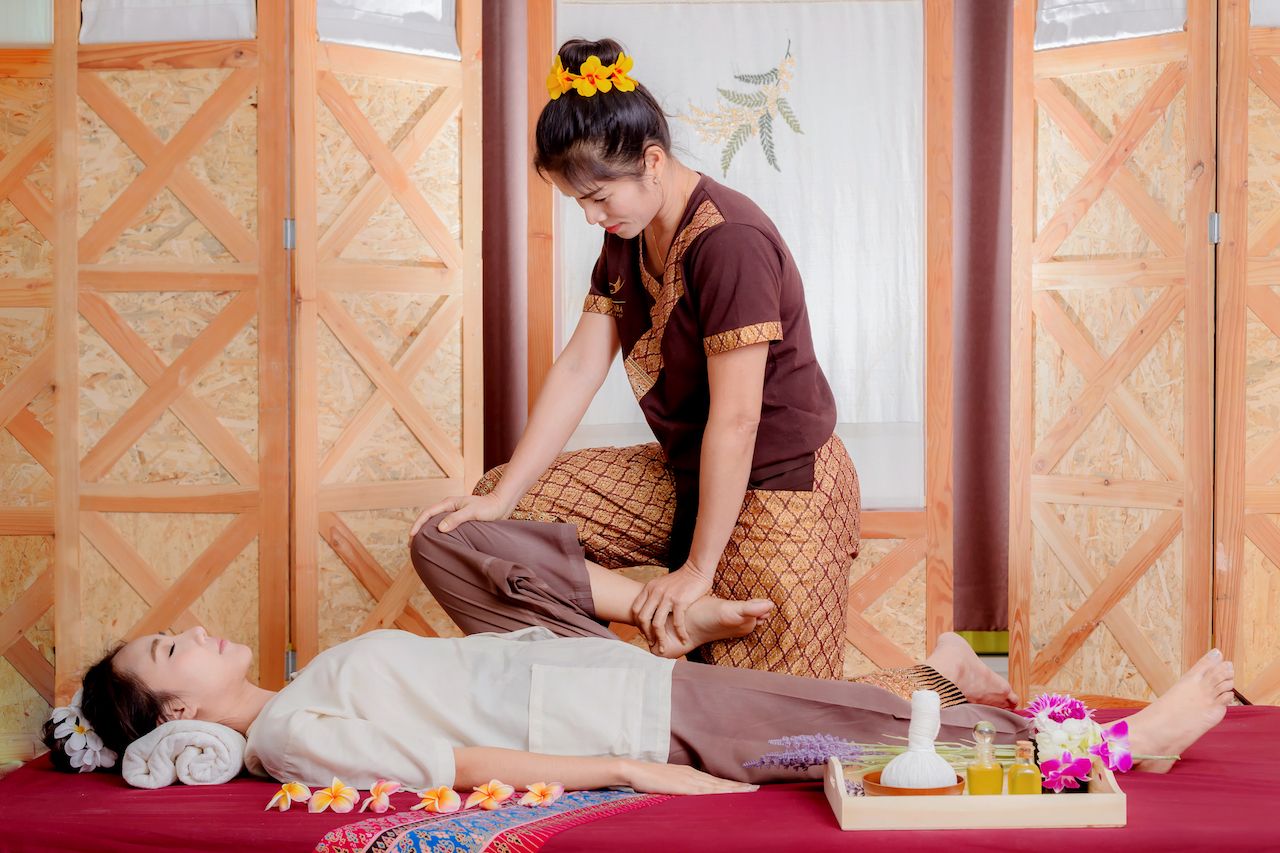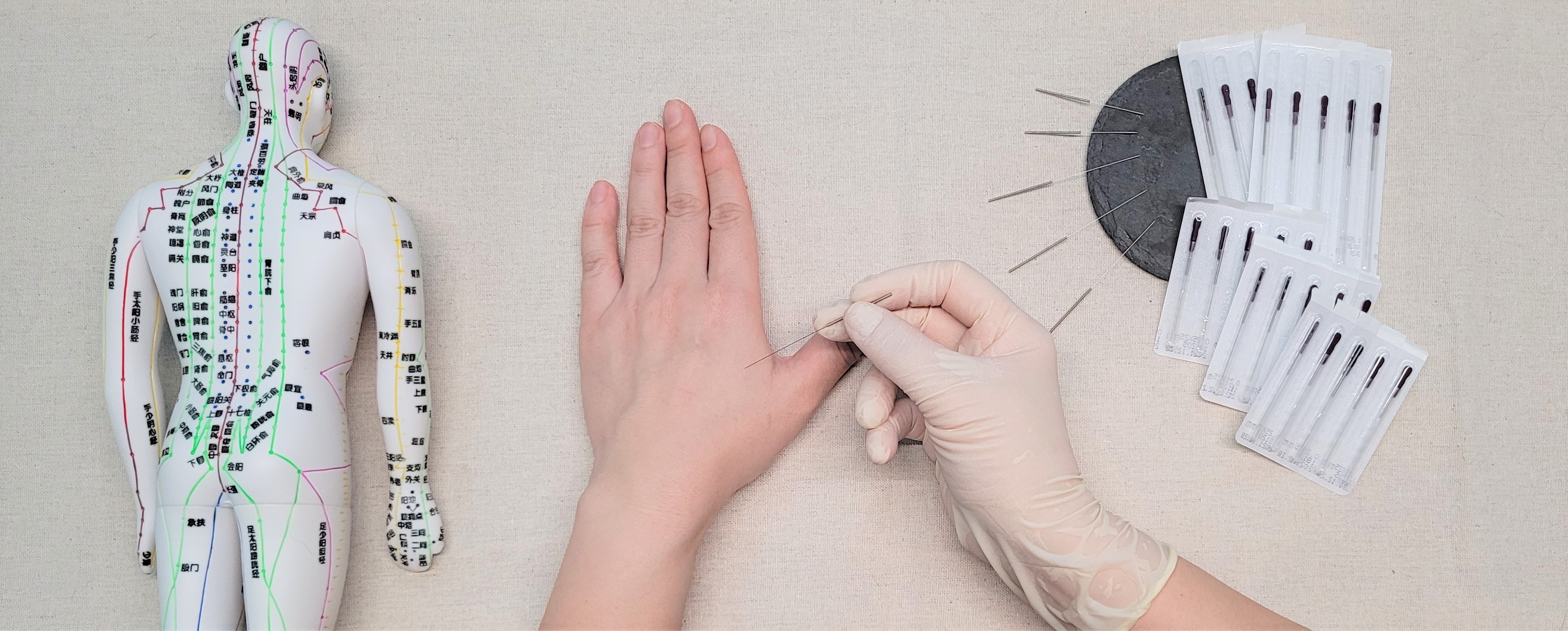Thai massage is a holistic approach to bodywork that incorporates a wide range of techniques, including massage, stretching, and mobilization of joints.
A Thai massage is a unique approach to bodywork and healing. This massage technique originated in India around 2,500 years ago. It was practiced by a physician named Jivaka Kumar Baccha who was a disciple of Buddha. In the later years, when Buddhist monks immigrated to Thailand, they took the science of Thai massage along with them. Over the years, Thai massage then became an integral part of Thai medicine. Thai massage is a beautiful combination of both Ayurvedic and traditional Chinese medicine.
What is Thai Massage? How does Thai Massage help in healing?
Thai massage is different from the other types of massage, where the massage therapist uses oil to knead the muscles and pressure points of the body. Instead, in Thai massage the person lies on a mat on the ground completely clothed. The masseur stretches and pulls the hands and legs in specific angles to help relieve tension, promote relaxation, and improve flexibility and blood circulation. If you're interested in a distinctive style of bodywork and healing, consider trying Thai massage in Sedona.
Massage practitioners use their hands, elbows, feet, and knees for applying pressure on the client’s body. They may stand, kneel, or walk on the client’s body to create a deep and relaxing pressure that effectively relieves muscle tension and soreness.
Thanks to its unique approach to stretching the body, Thai massage is also referred to as assisted yoga. Thai massage is a traditional healing practice that operates on the belief that life force energy flows through the body via pathways known as "sen." By targeting these “sen”, Thai massage works to release blockages and promote balance within the body. This approach allows for a holistic treatment that can help alleviate physical and emotional symptoms, leading to a sense of overall well-being.
What are the different techniques of Thai Massage?
A Thai massage is a holistic approach to bodywork that incorporates a wide range of techniques, including massage, stretching, and mobilization of joints.
Some of the common Thai Massage techniques are:
Thumb pressure: Under this technique, Thumb pressure is applied on various acupressure points along the sen lines. This helps in releasing tension thereby promoting relaxation.
Palm pressure: Palms are used to apply pressure on larger areas of the body, like the back and legs. This helps in improving the circulation of blood and reducing muscle tension.
Stretching: The stretching techniques help in improving flexibility and range of motion. The massage therapist uses their hands, elbows, knees, or feet for stretching the client's muscles and joints.
Joint mobilization: This technique is used for improving joint mobility and reducing muscle and body stiffness. The therapist makes gentle movements to help mobilize the client's joints like the hips, shoulders, or spine.
What are the benefits of a traditional Thai massage?
Below mentioned are the key benefits of Thai Massage that are supported by research.
1. Relief in Headache
Are you having migraine issues? Or experiencing regular headaches? Traditional Thai massage can help ease your headache symptoms.
Research shows that Thai massage helped patients suffering from chronic headaches by reducing the intensity of migraines and tension headaches. The benefits of Thai massage for headaches last from many days to up to 15 weeks.
2. Relief in Back pain
Thai massage is known to be an effective, nonpharmaceutical method to relieve back pain. Thai massage focuses on working on areas or trigger points that could be responsible for the back pain, like the tight, painful muscles in the inner thigh, abdomen and upper back area.
3. Relief from stiff joints pain
If you are experiencing stiffness or pain while moving your joints, Thai massage can provide you relief from the pain.
A study involving 60 patients suffering from osteoarthritis of the knee, showed that after 3 weeks of Thai massage, the patients experienced pain relief similar to relief received after 3 weeks of ibuprofen.
4. Improves flexibility and range of motion
Is your range of motion and flexibility affecting your athletic performance or making it difficult to go about your daily routine? A Thai massage can help improve flexibility and your range of motion.
Thai massage includes using a combination of compression, acupressure, and passive stretching. This helps improve the range of motion in the joints and muscles and also helps improve the body posture.
Researchers believe that Thai massage helps improve the flexibility of the body as it has the ability to improve blood circulation and oxygen supply to muscles. It also helps in pain reduction.
5. Lowers anxiety and stress levels
The key benefit of any massage therapy is the relaxation it provides. Thai massage is shown to lower anxiety and stress levels. Research shows that people receiving Thai massage tested lower on measures of psychological stress post-treatment.
6. Energy Revival
As mentioned above, Thai massage involves whole-body movements, similar to yoga. Most people have stated that they not only feel relaxed but also rejuvenated post a Thai massage session,
Conclusion
This gentle and calming experience can help to bring balance and wellness back to your body. Thai massage is also known for its potential to alleviate stress, tension, and pain, as well as enhance circulation, digestion, and immunity. For those seeking an alternative to more conventional massage therapies, Thai massage is worth considering.




No comments:
Post a Comment